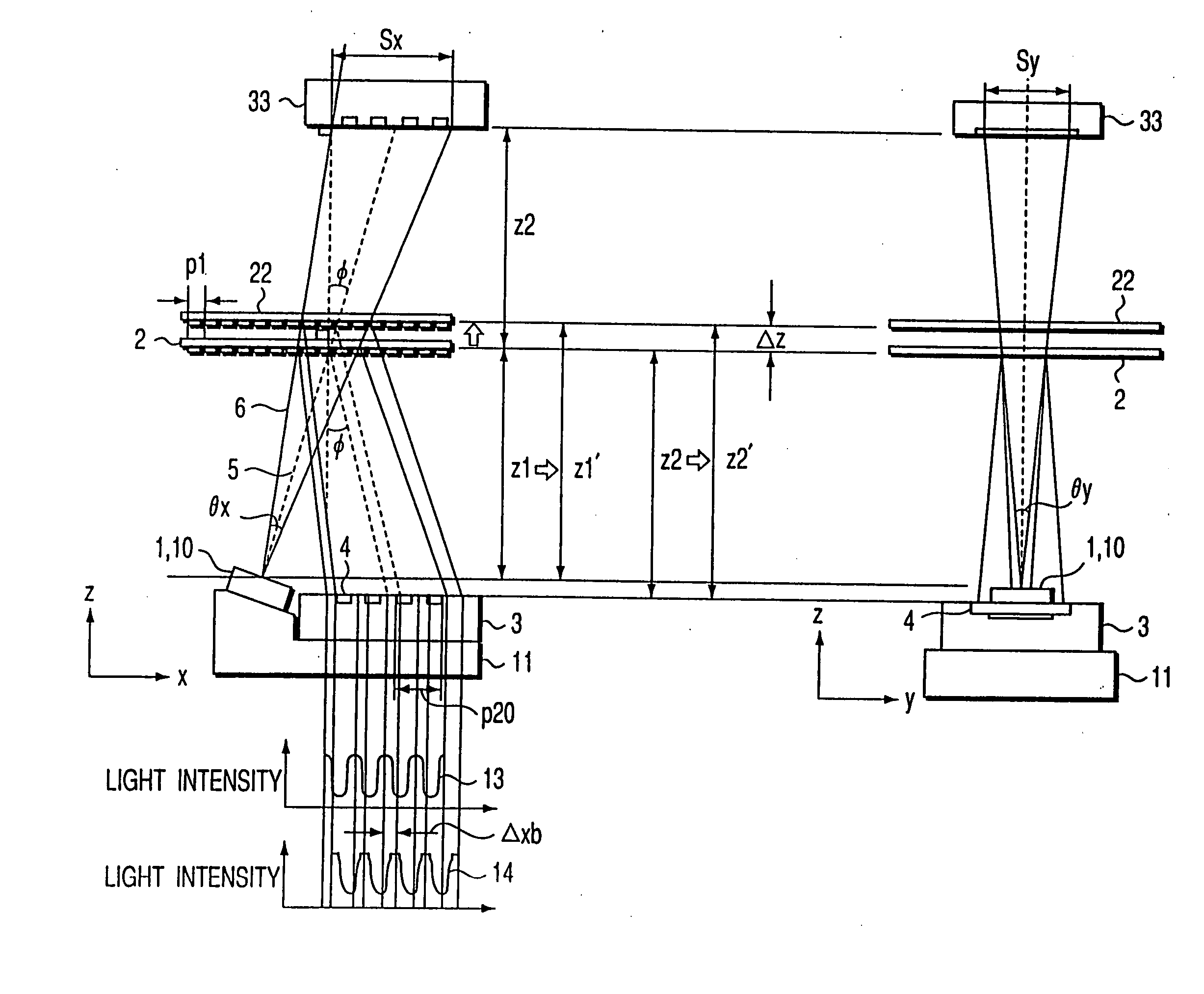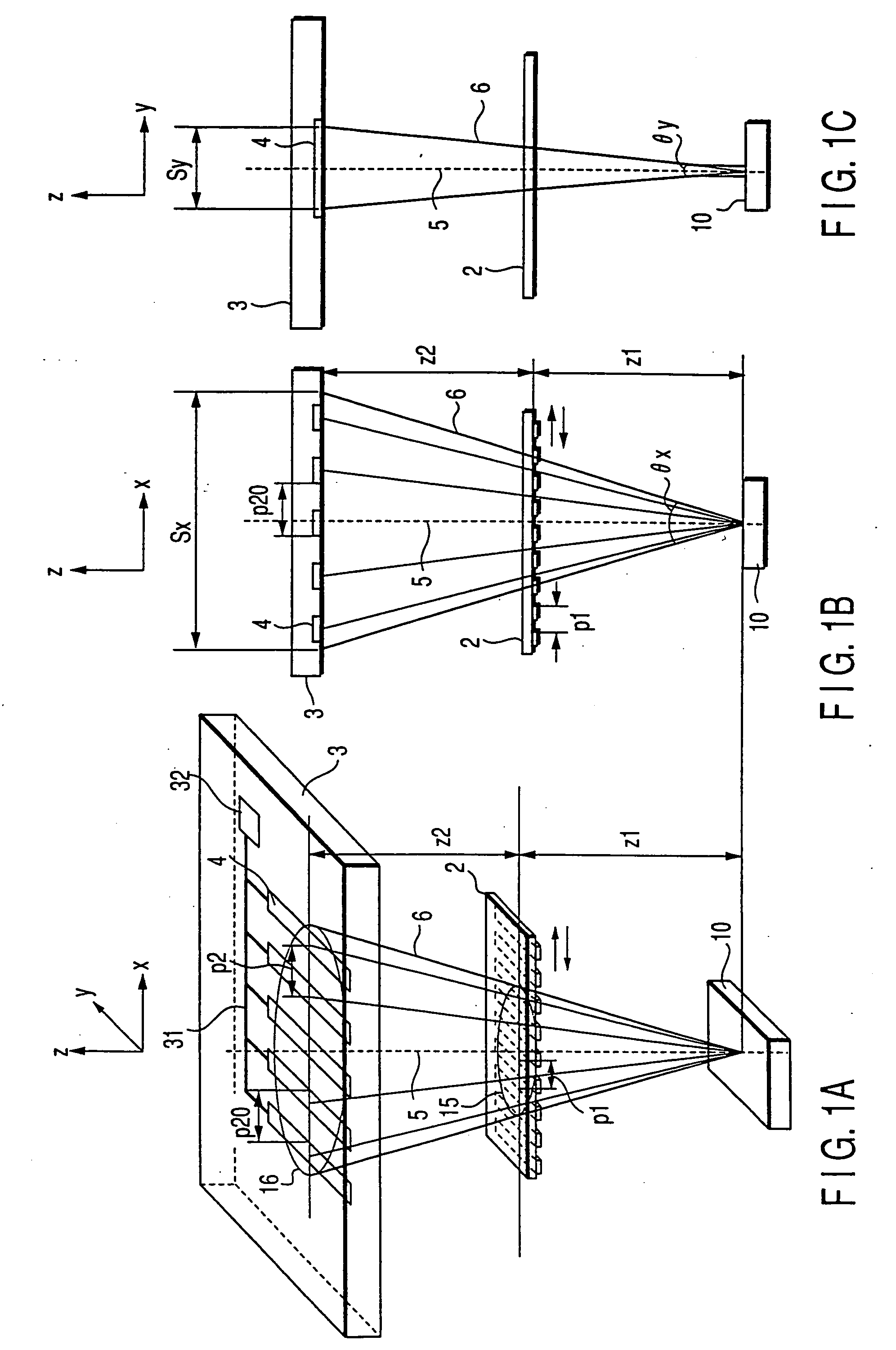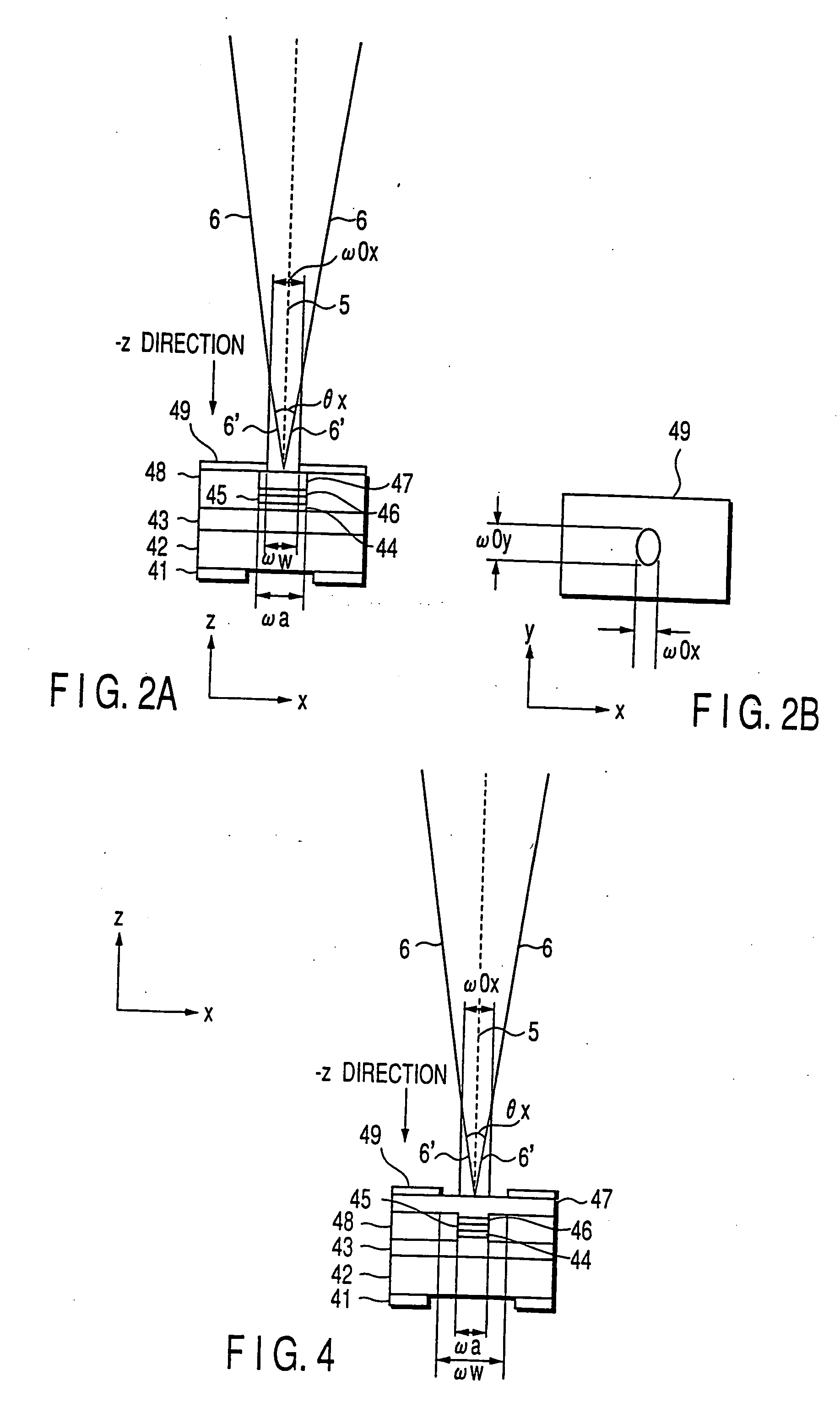Optical displacement sensor and optical encoder
a technology of optical encoder and optical displacement sensor, which is applied in the direction of converting sensor output optically, instruments, measurement devices, etc., can solve the problems of affecting the error in the measurement of the absolute value of the displacement scale, and the change in light intensity. , to achieve the effect of preventing the pitch of the diffraction interference pattern and simple design
- Summary
- Abstract
- Description
- Claims
- Application Information
AI Technical Summary
Benefits of technology
Problems solved by technology
Method used
Image
Examples
first embodiment
[0192]FIGS. 1A to 1C illustrate the schematic structure of an optical displacement sensor according to a first embodiment of this invention. FIG. 1A is a perspective view showing the structure of the first embodiment, FIG. 1B is a cross-sectional view of an xz plane corresponding to FIG. 1A and FIG. 1C is a cross-sectional view of a yz plane corresponding to in FIG. 1A.
[0193] As shown in FIGS. 1A to 1C, a surface emitting laser light source 10 and a scale 2 are arranged with such a positional relationship that the light beam emitted from this light source 10 is irradiated on the scale 2, and a photosensor 3 is located so as to receive a predetermined portion of a diffraction interference pattern formed from the light source by the scale 2.
[0194] An area 4 in FIGS. 1A to 1C indicates a light receiving area where the photosensor 3 is so located as to receive a predetermined portion of the diffraction interference pattern. If a plurality of light receiving areas 4 are provided, the l...
second embodiment
[0214] An optical displacement sensor according to a second embodiment of this invention will now be described with reference to FIGS. 6A and 6B.
[0215]FIG. 6A is a perspective view showing the optical displacement sensor according to the second embodiment, and FIG. 6B is a plan view showing the light receiving surface of the photosensor 3 in FIG. 6A as viewed towards the −z direction.
[0216] For those portions which are common to those of the first embodiment, their description will partly be omitted below.
[0217] In addition to the light intensity detecting means that is comprised of a plurality of light receiving areas formed at intervals of p2=np1(z1+z2) / z1, the aforementioned second light intensity detecting means is formed with a light receiving width of pm=mp1(z1+z2) / z1 (where m is a natural number different from n) in the pitch direction of the diffraction interference pattern on the light receiving surface, and those light intensity detecting means are connected to an outpu...
third embodiment
[0224] An optical displacement sensor according to a third embodiment of this invention will now be described with reference to FIG. 7.
[0225]FIG. 7 is a plan view of the light receiving surface of the photosensor 3 in FIG. 6A as viewed towards the −z direction.
[0226] For those portions which are common to those of the second embodiment, their description will be partly omitted below.
[0227] There are two sets of light intensity detecting means which are each comprised of a plurality of light receiving areas formed at intervals of p2=np1(z1+z2) / z1 and are connected to output pads 32 and 33 via the wirings 31.
[0228] The two groups of light receiving areas are shifted from each other by δp20 in the x direction on the light receiving surface.
[0229] The operation of the third embodiment of this invention will now be described.
[0230] When the scale 2 is displaced in the pitch direction, electric signals of different phases are output from the output pads 32 and 33.
[0231] Using the p...
PUM
 Login to View More
Login to View More Abstract
Description
Claims
Application Information
 Login to View More
Login to View More - R&D
- Intellectual Property
- Life Sciences
- Materials
- Tech Scout
- Unparalleled Data Quality
- Higher Quality Content
- 60% Fewer Hallucinations
Browse by: Latest US Patents, China's latest patents, Technical Efficacy Thesaurus, Application Domain, Technology Topic, Popular Technical Reports.
© 2025 PatSnap. All rights reserved.Legal|Privacy policy|Modern Slavery Act Transparency Statement|Sitemap|About US| Contact US: help@patsnap.com



